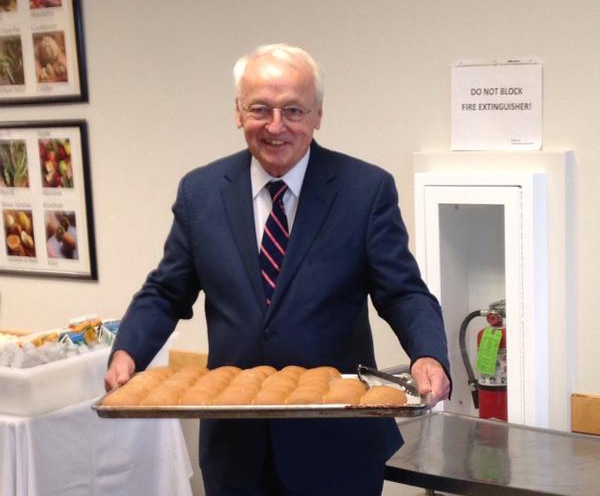
“This initiative reduces hunger among children in high-poverty areas, and ensures students have access to the healthy food they need to succeed in school,” USDA Under Secretary Kevin Concannon said during Tuesday's visit to Edison Computech Middle School in Fresno.
“About 20 percent of U.S. households with children were food insecure at some time in 2013 – meaning they had trouble affording enough food to eat,” said Lorrene Ritchie, director of UC Nutrition Policy Institute.
The new provision allows school districts to serve all of their students at no charge to the students, reducing the districts' paperwork for the school meal program. It also removes the stigma that deterred some students from accepting the needed nourishment.
“One of the largest and most accessible means to reduce food insecurity in children and improve their diet is the federal school lunch and breakfast programs,” said Ritchie. “Research has shown that school meals are healthier than most meals that students get elsewhere. For these reasons, we are highly supportive of the Community Eligibility Provision, which makes it easier for the kids who need it the most to have access to healthy meals at school.”
“It is wonderful to see that Fresno Unified School District has jumped on the brand new opportunity that the Community Eligibility Provision offers to bring nutritious meals and snacks to all of its students without charge,” Kenneth Hecht, director of policy for the UC Nutrition Policy Institute.
“More than four out of five families of Fresno Unified School District's 75,000 students have such low-incomes that they qualify for free or reduced-price meals,” Hecht said. “Many students' families are not English-language households, and the school district has been struggling — effectively — to improve its dropout and graduation rates. Free school meals are a major element in the district's successful effort to improve student success: nutritious free meals bring children to school, contribute to their health and academic performance and let families spend the money they save when their children can eat at school to improve the nutrition quality of the meals that are prepared at home.”
In addition to being able to serve more students, Fresno Unified School District's seven-year-old, state-of-the-art kitchen enables school chefs to prepare all meals and snacks within the district, according to Hecht. “This means food can be freshly prepared, without relying on preprocessed foods that often include fats, sugars and other unhealthy additives that contribute to childhood obesity,” he said, adding, “Children in Fresno County experience a more than 40 percent rate of overweight and obesity.”
“Not surprisingly food insecurity can result in lower diet quality,” said Ritchie. “For example, in a new study to be published in the Journal of Nutrition, we found that higher levels of food insecurity among children was related to increased consumption of energy, fat and sugar, and a lower intake of vegetables. Food insecurity can also have negative behavioral and cognitive effects.”
During Concannon's visit to Computech, members of the UC CalFresh nutrition education team met and got a photo of the USDA under secretary touring the kitchen.
“We were present due to UC CalFresh's close partnership with the district,” said Shelby MacNab, UC Cooperative Extension nutrition program manager in Fresno County. “We teach nutrition and are leading the Smarter Lunchrooms movement (SLM). Computech was our pilot site and the district was thrilled with the outcome. The undersecretary said SLM was music to his ears.”